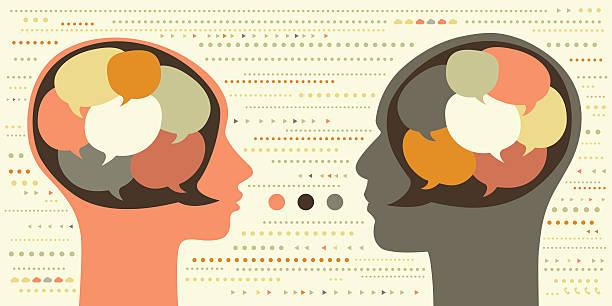The Communication Process
Communication: the Process of Filling Gaps Through Messages
In our intricate world, every entity and action communicates something. From the spoken word to the faintest smile, from the clothes we wear to our body language – they all convey messages, telling others who we are and what we stand for. This web of communication weaves through our lives, forming the basis of our interactions.
Communication can be broadly divided into two categories: institutional and interpersonal. Institutional communication involves organizations communicating with one another to forge partnerships and deal with complex arrangements. On the other hand, interpersonal communication is the core of our daily lives, encompassing interactions between individuals. In this article, we delve into the theoretical and practical aspects of communication algorithms, with a special focus on interpersonal communication.
To begin, let's distinguish between ideas and messages. Ideas are the sparks of insight that ignite within our minds, often driven by the need to solve problems or achieve goals. These ideas remain locked within us until we express them as messages. Messages can take various forms, such as spoken words, written text, facial expressions, and body language. When you convey an idea, you're not transmitting the thought as it exists in your mind; rather, you're translating it into a series of messages for others to decipher.
The initial step in the communication algorithm involves establishing the context and the relationship between the sender and the receiver. This context can range from professional affiliations to personal friendships, and it sets the stage for effective communication.
The second step is defining the most suitable context for the idea you wish to convey. Consider the environment, the audience, and the desired outcome carefully.
The third step is conveying your idea by selecting the appropriate means and channels of communication. Should you use a formal written report, an informal chat, or perhaps a presentation?
The fourth step is the transformation of your idea into a message that can be effectively transmitted using the chosen method. This step requires precision and clarity to ensure your message reaches its destination intact.
Moving on to the transmission phase, it's vital for the recipient to decode the received message accurately. However, misunderstandings can arise due to differences in how individuals perceive ideas. Flaws in encoding on the sender's side and decoding on the receiver's side can lead to confusion and misinterpretation, creating communication barriers.
In the business world, this issue becomes even more critical. HR managers, for example, often find themselves addressing conflicts arising from communication breakdowns. The importance of clear and effective communication cannot be overstated.
Enter the concept of minimal communication. This approach hinges on two fundamental conditions: a clear understanding of the communication's purpose and ensuring that the process unfolds smoothly among all parties involved. In other words, everyone should be able to decode the message without encountering undue criticisms or objections to the underlying idea. Addressing objections can be a separate but essential aspect of the communication process.
In scenarios involving multiple parties, this communication process may require additional steps for optimal clarity. Seeking feedback and conducting evaluations become indispensable practices. By embracing these measures, we can reduce errors and pave the way for effortless and automatic communication in the future.
In conclusion, effective communication is the cornerstone of our interconnected world. It transcends boundaries, bridges gaps, and fosters understanding. By mastering the art of conveying ideas through messages and following a well-defined communication algorithm, we can navigate the complexities of human interaction with finesse and clarity, ensuring that our intentions are heard and understood.


